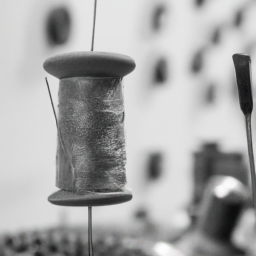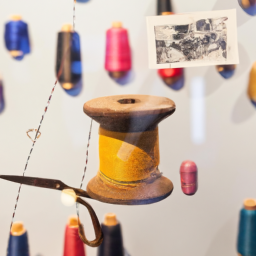
History of White Sewing Machines
White sewing machines have a significant place in the history of the textile industry. With their durability, innovation, and user-friendly features, White sewing machines have been a popular choice among sewists for over a century.
The first White sewing machine was introduced in the late 19th century. The company, originally known as White Manufacturing Company, was founded by Thomas White in 1858. White, an entrepreneur and inventor, started the business in Templeton, Massachusetts.
Throughout the years, White sewing machines gained a reputation for their exceptional quality and performance. The company continuously improved its machines, introducing new features that revolutionized the way sewing was done. Their commitment to innovation earned them a loyal customer base.

“White sewing machines were known for their durability and precision.”
During the early 20th century, White Manufacturing Company expanded its product line. They manufactured a wide range of sewing machines, including household machines, industrial machines, and even specialized models for professional tailors and seamstresses.
One of the remarkable innovations by White was the introduction of the first electric sewing machine. In 1919, they launched the White Rotary electric sewing machine, which quickly became popular due to its ease of use and efficiency. This development significantly impacted the sewing industry, making sewing more accessible to the masses.
White sewing machines continued to evolve with the changing times. They incorporated additional features such as automatic tension control, zigzag stitching, and decorative stitching options. These advancements made sewing easier and allowed sewists to explore their creativity.
Over the years, White Manufacturing Company underwent various changes. It merged with several other sewing machine manufacturers, adapted to new technologies, and experienced ups and downs. However, the legacy of White sewing machines remained strong.

“White sewing machines became a beloved household item for many generations.”
In recent times, the White brand continues to flourish under new ownership. While the sewing machine industry has seen many advancements and competitors, White sewing machines still carry the legacy of quality and reliability.
Today, White sewing machines are cherished by both vintage sewing machine collectors and modern sewing enthusiasts. Their durable construction allows many vintage models to still be in working condition, showcasing the brand’s commitment to producing long-lasting machines.
As we celebrate the history of White sewing machines, we appreciate the impact they have had on the textile industry. From their humble beginnings in the 19th century to their continued popularity today, White sewing machines remain an integral part of sewing history.




